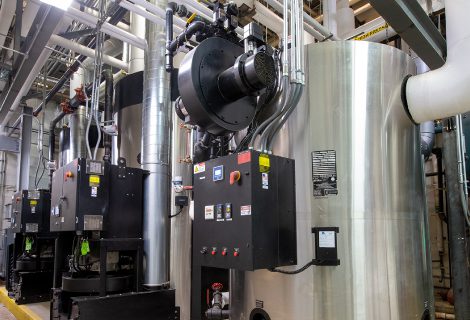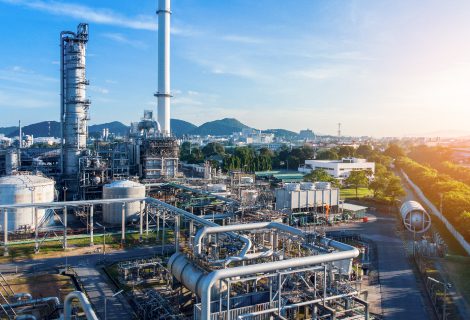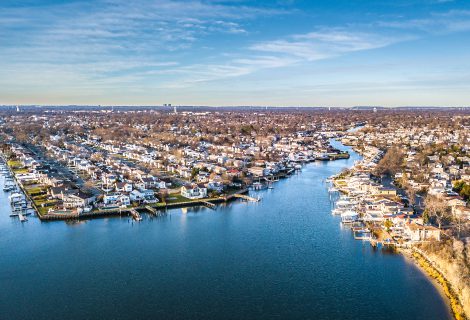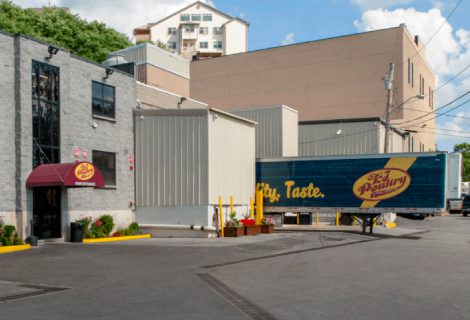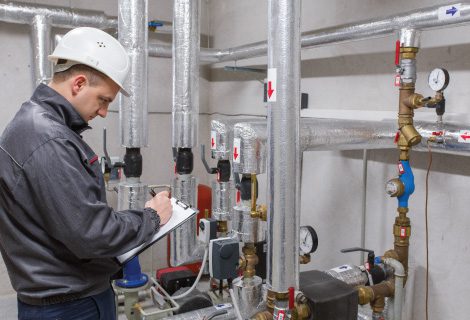Factors to Consider When Designing Multiple Temperature Returns in Boiler Applications
In the past five years, we have seen a propensity for designers to facilitate a dual return temperature option on boiler room applications. This idea was conceived with the anticipation of maximizing energy efficiency by minimizing waste energy.
There are several published articles and videos explaining the theory behind how it “could” save energy, however, data-based evidence predicated on third-party testing has not accompanied these claims.
The argument predicts that you can take advantage of multiple zones in a building to route the water from “colder” zones (i.e., snow melt, radiant floor heat, etc.) into a specific section of the HX to condense while taking hotter water zones (domestic water priority heating or higher temp AHU zones) through an alternate section of the HX where condensing will not occur. In order for this scenario to be practical, the efficiency gain in the colder section must offset the efficiency losses in the hotter section.
Complexity and Cost Concerns
That gain would have to offset the cost of additional piping, controls and potential equipment failures/downtime due to the complexity of the system. It would also need to produce sufficient energy savings to compel an engineer to limit the choice of equipment selection since very few manufacturers employ this strategy.
In theory, the argument makes sense – however only in the rare case where you have two separate temperature zones where one of them has significantly colder return water temp available all the time. In practice, it is at best, a more complicated system and at worst, will shorten the lifespan of the HX.
Challenges in Maintaining Flow
Why complicate the entire hydronic system with dual zones? Consider:
- Flow Interruption Issues: What happens when there is no call for heat in the “cold” zones? Flow would have to stop completely to entire areas of the HX, depriving these surfaces of necessary cooling and resulting in uneven thermal expansion within the HX. This can cause accelerated HX failures due to cyclic fatigue and localized boiling/precipitates creating scale. This is especially prevalent in a single-pass firetube HX design without any external thermal expansion compensation.
- Pumping Challenges: If you employ a strategy to maintain flow through the HX to avoid the aforementioned scenario, you’d be required to run a pump through your entire system whether there is a call for heat or not. The length of the fireside of the tubes has heat energy whether or not there is water flow to that section. That heat on the “condensing” section of the HX thus remains; this creates the potential for localized boiling.
- Temperature Control Complexities: The system would need to have two separate return water temps sharing the same boiler setpoint. In other words, 180°F leaving the boiler, with 150°F returning from the “hot” side of the system, but 80°F water returning from the “cold” side. This application design is not typical and would only operate in those “optimal” conditions in very rare instances. This strategy also begs the question, “Who controls the two return water temps to make sure that the coldest possible water is hitting the condensing section of the HX?”.
- Efficiency Concerns: Another consideration is the shoulder months where cold zones (snow melt, pool heat, etc.) are not needed? In a more conventional system, all the system flow would go to comfort heating systems that can benefit from system setback to a cold condition – i.e., 140/110 delta T. In the dual return example, the flow would be directed through the “hotter” section of the HX. With less of the total HX surface area being utilized, both sensible and condensing heat transfer is greatly reduced resulting in lower efficiency.
- Other questions to consider include:
- How are the minimum flow requirements of the boiler maintained during times when only one section of the HX has a call for heat?
- How much electrical energy is expended when running pumps through a “cold” section of the system even though there is no call for heat?
- In cases where variable primary flow is used, how does the VFD on the pump react with different delta T’s in the various “zones”?
- Are there multiple flow switches to ensure minimum flow? Who is responsible for those controls and how does a malfunction in the flow management impact the HX warranty?
Opting for Simplicity and Efficiency
One fundamental error in system design is sticking with complexity without striving to delete parts and processes. Simple, proven efficient solutions typically function most reliably.
Designing a system with the capability to accept very high delta-T, low flow, and accommodate a setback schedule for the coldest available return water temperature year-round is effective, simple, and will optimize energy usage.


